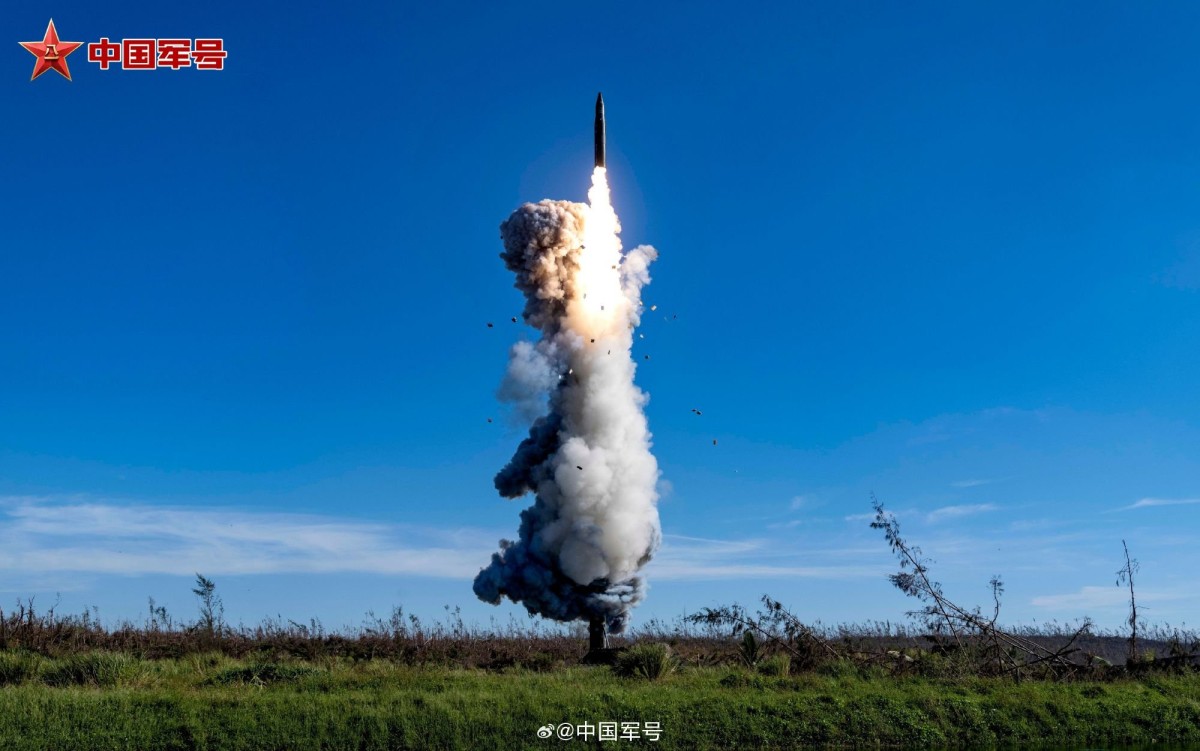On September 25, China successfully test-fired an intercontinental ballistic missile (ICBM) into the Pacific Ocean, showcasing its strategic capabilities in a rare public demonstration. Experts believe that the missile involved in the test was a DF-31 variant, designed to be launched from a mobile platform that can effectively operate in rugged terrain.
The launch, the first of its kind in over four decades, was seen by analysts as a signal directed at the United States and its allies amidst growing regional tensions.
According to a statement from the Chinese Defense Ministry, the missile, carrying a dummy warhead, was launched at 8:44 a.m. Beijing time.
The missile traveled approximately 12,000 kilometers (7,460 miles) from its launch site on Hainan Island, passing near the Philippines and Guam, before splashing down in the Pacific Ocean near the French Polynesian Marquesas Islands.
This event is the first test since China launched its DF-5 ICBM into the South Pacific in 1980, traversing over 8,000 kilometers. The latest test highlights the evolving capabilities of China’s missile program.
It also underscores its ability to reach distant targets, a development likely to increase concerns among its regional rivals and the US.
While China has not officially revealed the type of missile used in the recent test, initial speculation pointed to the Dong Feng-41 (DF-41), the country’s longest-range ICBM, which can carry up to 10 nuclear warheads and has a range of over 12,000 kilometers.
However, military analysts later revised their assessment, suggesting that the missile was more likely a variant of the DF-31, a slightly less powerful but still formidable ICBM. Experts have concluded that the DF-31AG was most likely used in the recent test.
Open-Source Intelligence (OSINT) analyst Rick Joe noted that the missile’s profile aligned with that of the 31A/AG, although he acknowledged the ambiguity surrounding the launch apparatus and the rarity of publicized images of Chinese ICBMs.
Surprised that they actually showed the actual launch.
Looks somewhat consistent with a 31A/AG profile but considering the unknown launch apparatus, obscured site, and overall rare images of actual PLARF ICBMs themselves, who knows.https://t.co/bAGfkP2wpw pic.twitter.com/VVQqYcrMV6
— Rick Joe (@RickJoe_PLA) September 25, 2024
While not as powerful as the DF-41, the DF-31AG remains a formidable weapon in China’s nuclear arsenal. The test is an emphatic demonstration of China’s strategic capabilities and a message to the United States and its allies, signaling that Beijing is prepared to assert its military presence amid rising regional tensions.
Dong Feng 31AG ICBM
Chinese experts, as quoted by the Hong Kong-based South China Morning Post, have also confirmed that the DF-31 intercontinental ballistic missile (ICBM) participated in the recent test.
The DF-31, which translates to “East Wind-31”, is one of three types of ICBMs currently in the People’s Liberation Army’s (PLA) arsenal. The other two are the older DF-5, which first became operational in the early 1970s, and the more advanced DF-41.
First introduced into service in 2006, the three-stage DF-31 and its various adaptations are designed to carry either a single warhead or multiple smaller warheads.
According to the Bulletin of the Atomic Scientists, the DF-31 was notable for being China’s first solid-fuel, road-mobile ICBM, with a range of approximately 4,470 miles. Nevertheless, the base model cannot reach the continental United States from China.
China has developed at least three key variants of the DF-31, specifically the DF-31A, DF-31AG, and a silo-based model. These advanced versions come with extended operational ranges and improved maneuverability.
The DF-31AG, which is nuclear-capable, features a newly designed missile vehicle that boasts enhanced off-road capabilities, making it more versatile for deployment in various terrains.

Fu Qianshao, a former PLA equipment specialist, pointed out that while the DF-31 has the potential for intercontinental capabilities, it has not undergone a complete range launch test until now. This recent test is, therefore, deemed crucial for validating the missile’s operational readiness.
Ankit Panda, a nuclear policy analyst with the Carnegie Endowment for International Peace, also confirmed that the missile involved in the test was indeed the DF-31AG.
The DF-31A and DF-31AG variants can strike targets as far as 13,200 kilometers (around 8,200 miles), placing the US mainland within their operational range.
The DF-31AG, which made its public debut during a 2017 military parade commemorating the PLA’s 90th anniversary, is equipped with a mobile launch platform for enhanced maneuverability and deployment flexibility.
The missile, developed by the China Aerospace Science Corporation (CASC) in partnership with the Tai’an Special Vehicle Company, is equipped with a wheeled transport erector launcher (TEL) designed to traverse rough, unpaved terrain.
This capability enables the PLA to conceal and distribute its missile assets, complicating enemy targeting efforts. Currently, there are three known brigades of DF-31AG missiles, comprising 36 launchers.
These brigades are strategically positioned in the northwestern province of Gansu, as well as the central provinces of Hunan and Henan.
- Contact the author at ashishmichel(at)gmail.com
- Follow EurAsian Times on Google News




